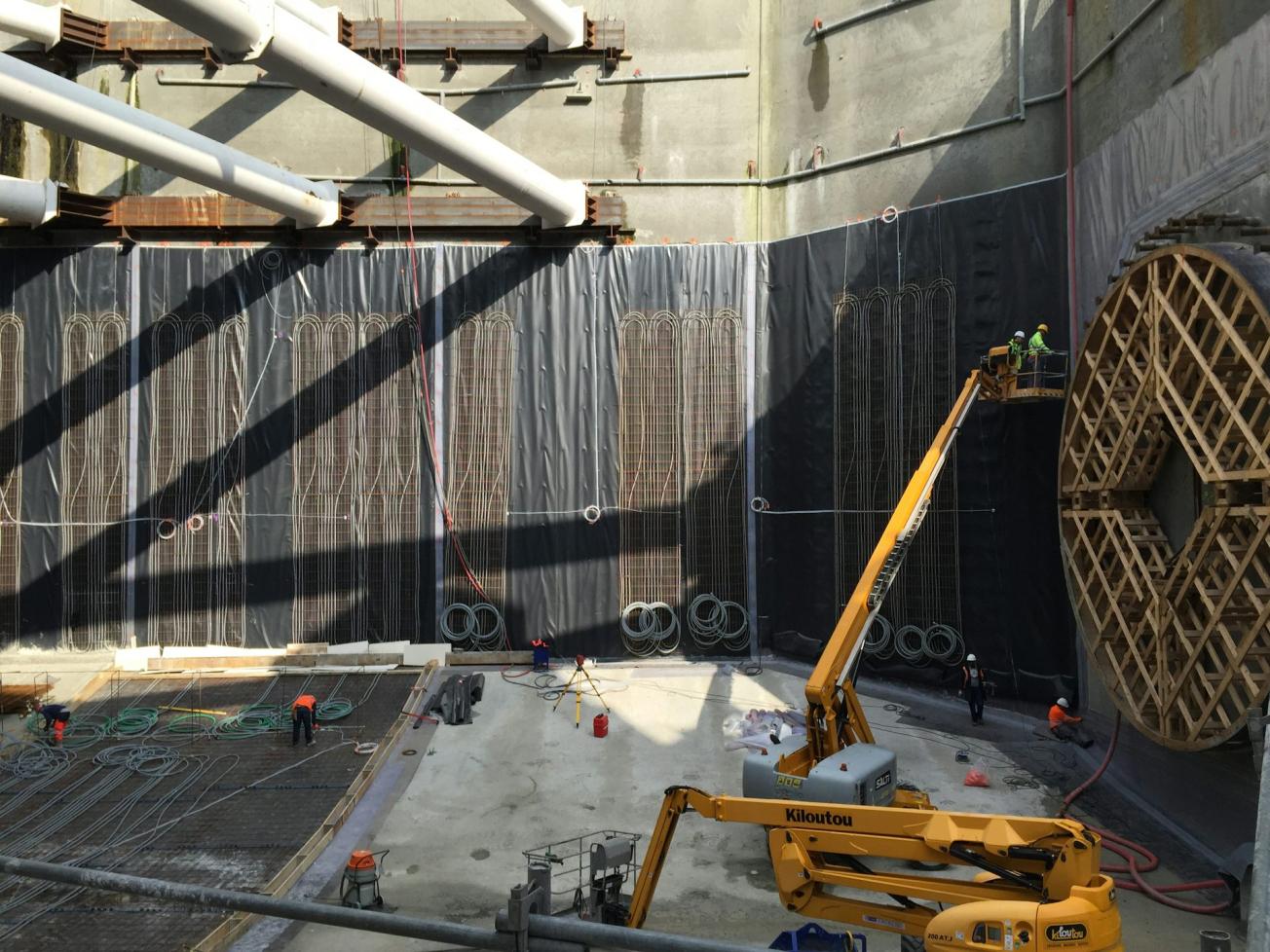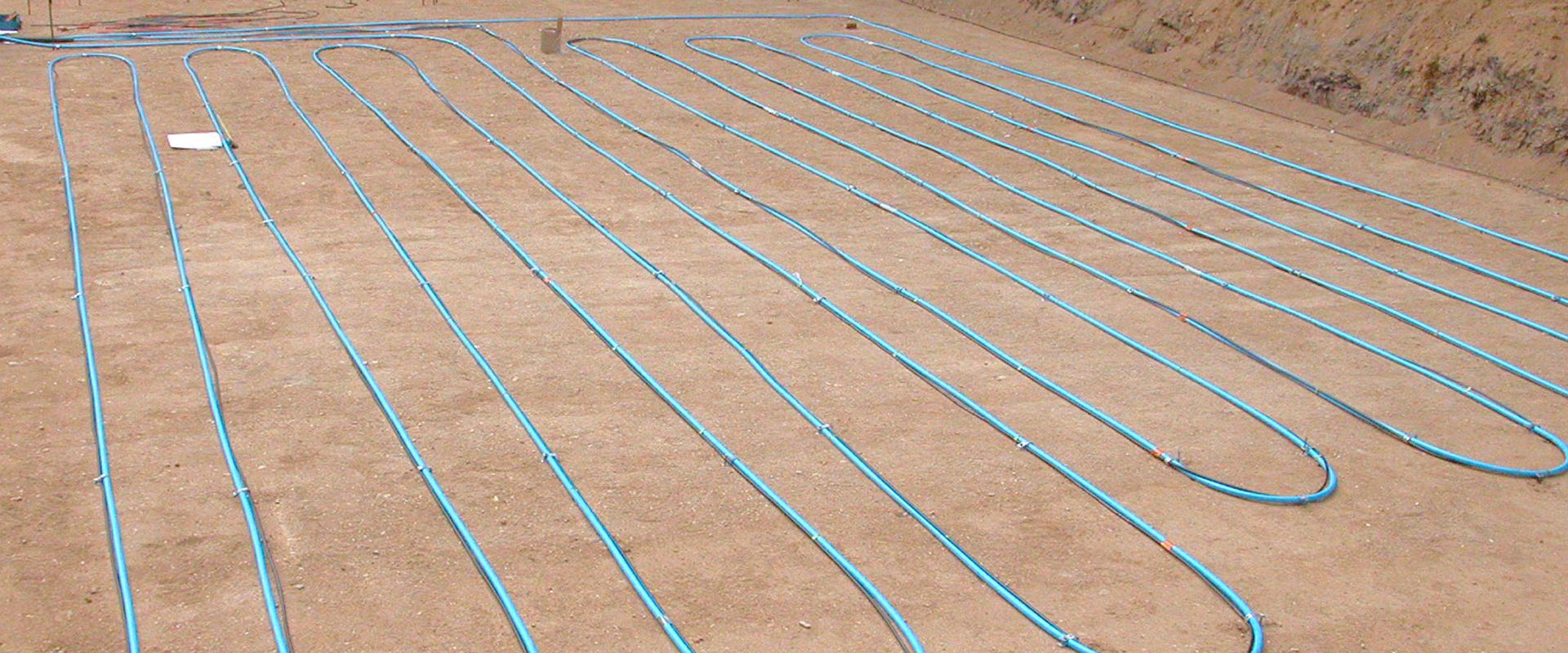
A worker installs heat exchanger tubes on the concrete walls during the construction of the Rennes metro.
© Aquassys / JF Gobichon
Untapped potential?
Suppose we took advantage of the underground warmth of the metro, using geothermal energy to provide heat for homes? The Greater Rennes Authority decided to do just this. During the construction of metro line B, the city decided to install geothermal exchangers on the cast walls and spread footings (the masonry platforms supporting the infrastructure) at the Sainte-Anne, Jules Ferry, Saint-Germain and Cleunay stations.
This system was a first in France and also worldwide, given the scale involved. Today, it provides heat for 12 homes and 1,000 square metres of office space. The exchangers already installed have the potential to provide even more heat.
However, despite its economic and environmental advantages, this solution remains under-exploited. It would therefore be useful to obtain more feedback, from Greater Rennes and other projects, to encourage similar projects.
The example of the Rennes metro shows that the obstacles are not so much technical as organisational. Established practices need to be changed and, above all, local authorities need to be convinced of the benefits and to become involved in major civil engineering projects at a far earlier stage.
Energy geostructures, instructions for use
Let's start by explaining exactly what geothermal energy is. Wine lovers know that temperatures in a cellar undergo little variation over the year. Geothermal energy takes advantage of these underground temperatures, which vary less than on the surface, to exchange heat in order to heat – or cool – our buildings.
Energy geostructures – also known as thermoactive structures – are part of the large family of so-called “surface” geothermal systems, i.e. those installed in the immediate subsurface, at depths of up to a few dozen metres. Specifically, these geostructures are equipped with heat pumps, to heat – or cool – nearby buildings.
This means using the foundations of buildings or civil engineering structures (pile foundations, tunnels, underground stations, etc.) as geothermal heat exchangers, by installing heat exchanger tubes during construction. In the case of foundation piles, we talk about geothermal piles.
These key structural parts thereby gain a second energy-related function, eliminating the need for dedicated geothermal boreholes. The associated additional costs are very low compared with the benefits. This type of installation also improves the structure’s carbon footprint.
This technology first emerged in the 1980s and has since been developed. However, the large-scale development of this local, non-intermittent (unlike solar or wind power, for example), renewable, low-risk and low-carbon energy source remains far below its potential.
The metro, an interesting use case
Rennes is a pioneer in this field with its metro system. This is the first system of its type to cover such a broad area (almost 4000 m2 of spread footings and 3,600 m2 of cast walls) and to generate heat for buildings on the surface, rather than for the infrastructure of the metro itself.
Rennes nevertheless faced a number of difficulties in implementing this project, although the issues were not so much technical as administrative. While the contracting authorities for public transport infrastructure are willing to incorporate local renewable energy sources, they often find it difficult to assess the potential of projects, owing to a lack of feedback.
So could the success of the project in Greater Rennes pave the way for more initiatives and inspire other local authorities by demonstrating the benefits of this technology? The THERMETRENNES research project, supported by ADEME, was set up to identify the obstacles to development and to learn as much as possible from the experience of Rennes.





